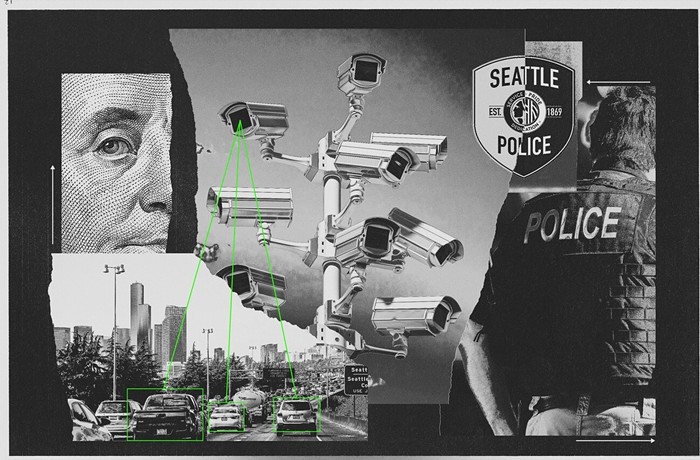Cheers filled City Hall on August 13 as hundreds of people watched the city council unanimously vote to give a 10-month protection window to the Showbox. The music venue's supporters had gotten their first victory: The Showbox was now temporarily covered under the Pike Place Market Historic District, making it nearly impossible to demolish it and replace it with a $100 million apartment building.
However, saving the venue for 10 months is a far cry from keeping it a music venue into the future.
A few weeks after the council's vote, Roger Forbes, the property's owner, sued the city for $40 million in damages and a reversal of protections for the property. The lawsuit claims that the venue doesn't meet the historical requirements for protection, that it doesn't belong in the Pike Place Market Historic District, and that the city council acted illegally in protecting it.
Will Forbes's lawsuit prevail? Chuck Wolfe, a land-use attorney who has taught planning law at the University of Washington for 20 years, said the lawsuit raises a number of valid legal questions.
"It's a close case. Look at the reasons and the substance for the Market Historic District. Was it really intended to include music venues that happen to be on the edge of it?" Wolfe said.
But Andrew Schwartz, a San Francisco land-use attorney who has argued property cases before the US Supreme Court, told me that buildings across the country like the Showbox have been preserved simply because they improve an adjoining historic district. "If it has geographic connections to the Pike Place Market and if... there's a synergy to attract tourism, these are all very standard planning rationales for imposing historic preservation restrictions on land and buildings," Schwartz said.
Even if the case does go in the city's favor, that doesn't mean the Showbox is saved. Blocking a $100 million development is not the same as keeping music on the Showbox's stage, especially when the building needs millions of dollars in seismic upgrades and its owner doesn't care if it remains a music venue.
If we really want to save the venue, some rich people are going to need to buy it. Council Member Mike O'Brien said in an interview in August that to preserve the venue "long-term," the city might need "to see the community come together to essentially fund what it's going to take to keep the Showbox operating."
This is a pretty common tactic in preservation work. Downtown's First Methodist Church, one of the city's oldest sanctuaries, was saved after a private developer put up more than $20 million to buy the building. The Central District's Washington Hall was saved after the preservation organization Historic Seattle negotiated a deal to buy the building for $9.86 million. Naomi West of Historic Seattle said it took seven years to get the funding together for her organization to work out a deal to buy the hall. She notes that the bigger price tag at the Showbox would likely take an even bigger effort.
"That [kind of fundraising] takes more time than someone coming in with a big checkbook and saying, 'I'll take it,'" West said.
Council Member Kshama Sawant, who has spearheaded the council's protection efforts, has floated the idea of the city buying the venue, but she wouldn't commit to funding the purchase when I spoke with her in September.
"That may be ultimately the option, I don't know. I don't rule it out. In fact, the most powerful thing for the city to do would be to own... this venue. Because then it will belong to all the people in Seattle in perpetuity," Sawant told me.
Basically, even with a unanimous city council vote to temporarily save the venue, those protections are still just that—temporary.
Know any millionaires?




















